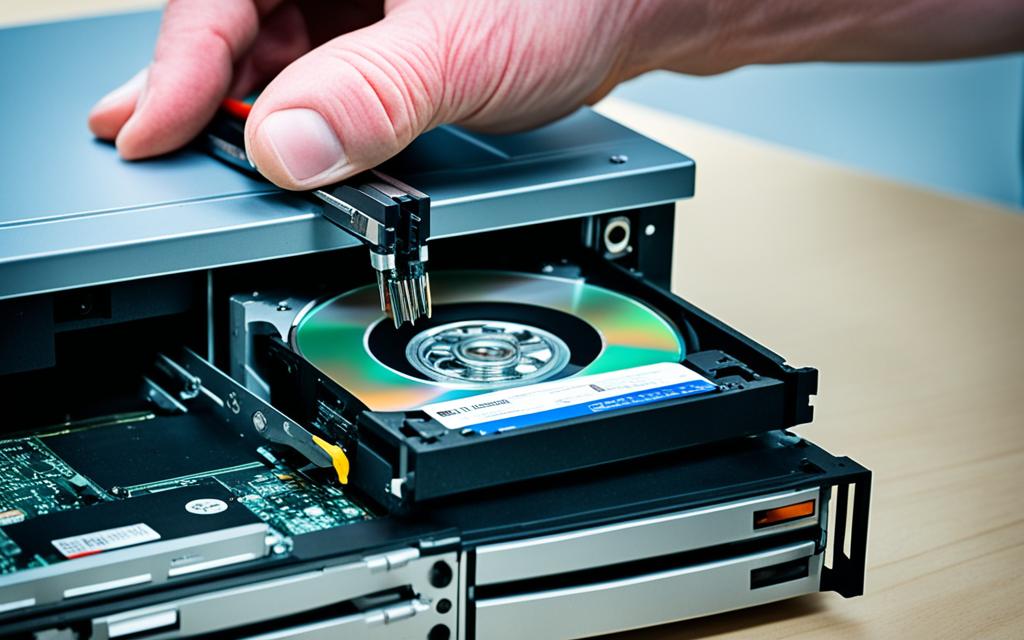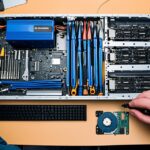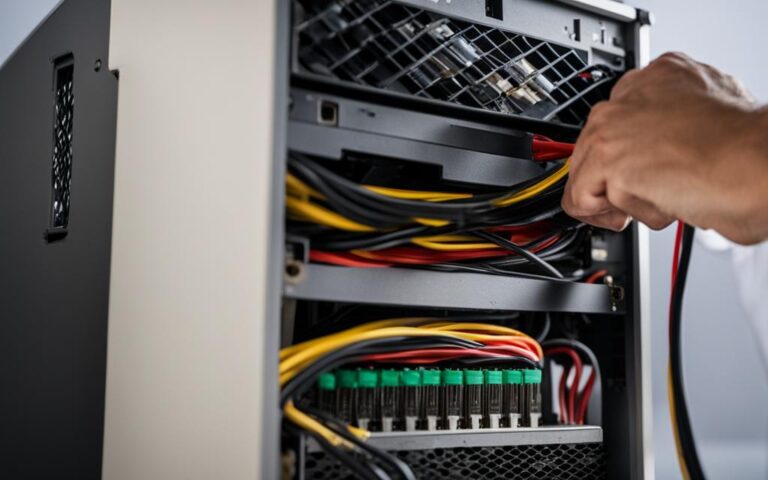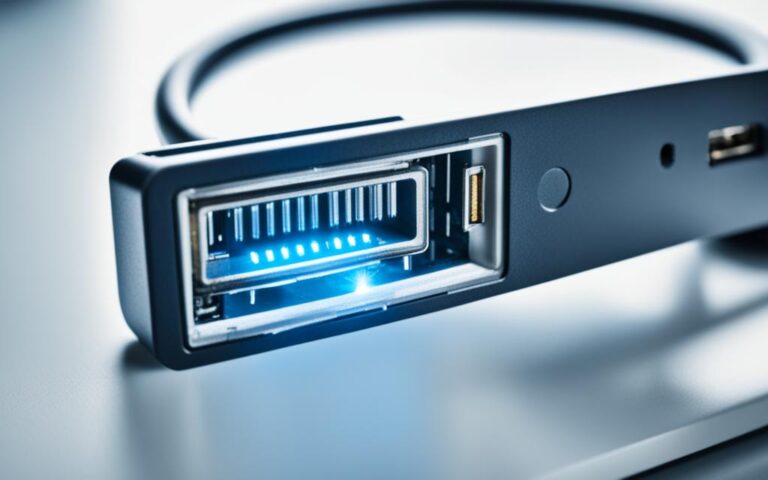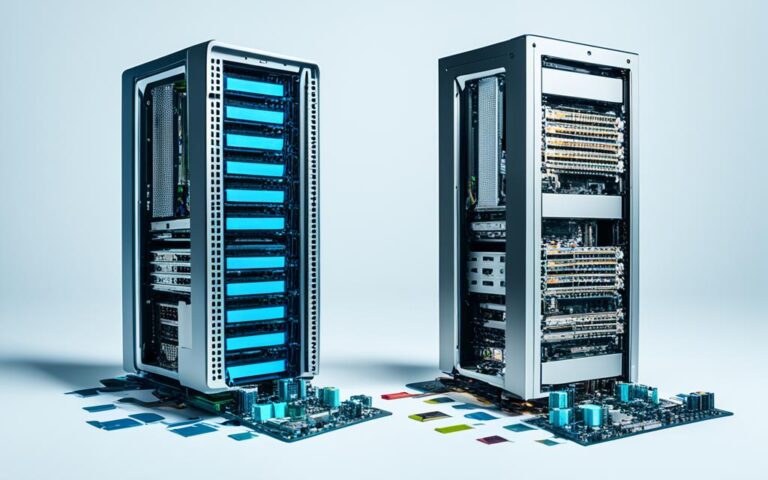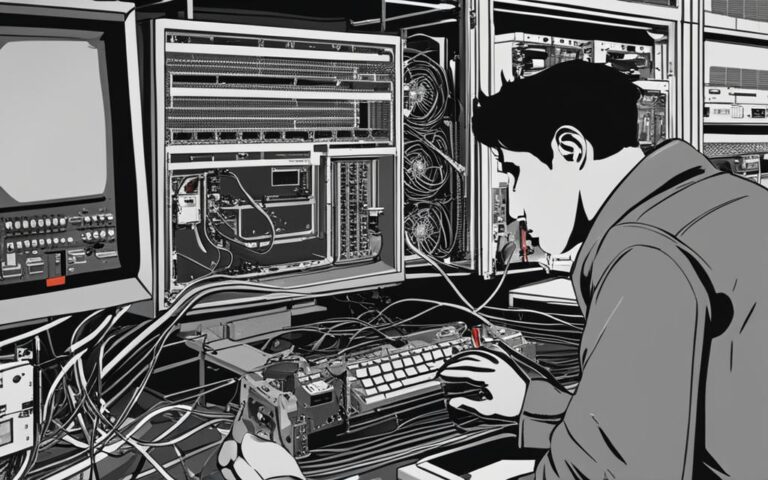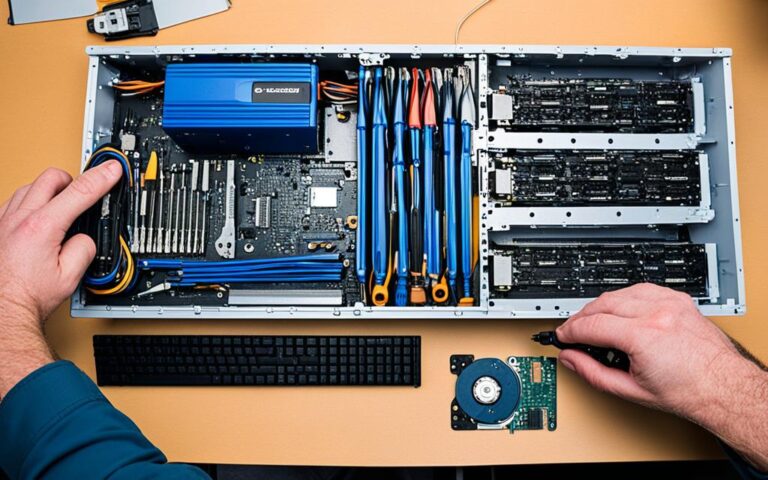Repairing Optical Drive Failures in Desktop PCs
Are you experiencing issues with your optical drive on your desktop PC? Disc reading problems, drive malfunctions, and other related issues can be frustrating and hinder your productivity. Fortunately, there are solutions available that can help get your optical drive back in working order. In this article, we will explore common issues with CD/DVD drives in desktop PCs and provide troubleshooting steps to resolve these problems.
Optical drives are essential components of desktop PCs, allowing users to read and write CDs and DVDs. However, they can encounter various issues that affect their functionality. These issues include disc reading errors, compatibility problems, and software conflicts. If left unresolved, these problems can significantly impact the overall performance of your computer.
If you are experiencing any of these problems, it is essential to take action and repair your optical drive. Depending on the nature of the issue, you may be able to resolve it on your own with the help of troubleshooting steps and maintenance tips. However, for more complicated issues or if you are unsure about performing repairs yourself, it is advisable to seek professional repair services.
Repair services can diagnose the exact cause of the problem and provide effective solutions. Whether it’s updating device drivers, cleaning the drive, or replacing faulty components, professionals have the expertise and tools to get your optical drive functioning optimally again. They can also offer advice on how to avoid future issues and ensure the longevity of your optical drive.
In the following sections of this article, we will delve deeper into common issues with CD/DVD drives in desktop PCs, provide troubleshooting steps to address these problems, and offer additional repair solutions. By following these guidelines and seeking professional assistance when necessary, you can resolve optical drive issues and ensure smooth functioning for your desktop PC.
Common Issues with CD/DVD Drives
CD or DVD drive issues can be frustrating and interrupt the smooth functioning of your computer. Understanding common problems and troubleshooting solutions can help resolve these issues quickly and effectively.
1. Bad or Dirty Discs
One of the most common issues with CD/DVD drives is the use of bad or dirty discs. Scratches, fingerprints, or dust particles on the disc’s surface can prevent proper disc reading and cause playback errors. It is essential to regularly clean your discs using a soft, lint-free cloth and handle them with care to avoid damage.
2. Wrong Disc Type Inserted
Another common problem arises when users insert the wrong disc type into their CD or DVD drive. Each drive has specific compatibility requirements, and inserting an incompatible disc can result in errors or the drive not recognizing the disc. Always check the disc label and ensure it matches the drive’s specifications.
3. Missing Playback Software
Sometimes, CD or DVD playback software may not be installed on your computer, leading to issues with disc playback. Ensure that you have appropriate software such as Windows Media Player or VLC Media Player installed to enable smooth playback of CDs and DVDs.
4. Faulty Windows Update
Windows updates can occasionally cause conflicts with CD or DVD drives, resulting in malfunctioning or non-responsive drives. If you recently installed a Windows update and encountered CD/DVD drive issues afterward, try uninstalling the update and check if the problem resolves.
5. Conflicts with Installed Apps
Conflicts with other installed applications can also interfere with the functioning of your CD/DVD drive. Certain software, such as virtual drive emulation programs or disc burning utilities, may cause conflicts that prevent the drive from functioning correctly. Try disabling or uninstalling any recently installed software to see if the drive starts working again.
6. Driver Problems
Outdated or corrupted drivers can cause CD/DVD drive issues. It is crucial to regularly update your drive’s drivers to ensure compatibility and optimal performance. If your drive is not working correctly, try updating or reinstalling the driver to resolve the problem.
By addressing these common issues, you can get your CD or DVD drive back to functioning properly. Troubleshooting may involve checking the disc, verifying device manager settings, updating or reinstalling the driver, and performing a system restore if necessary. Stay tuned for the next section for detailed troubleshooting steps to resolve CD/DVD drive issues.
Troubleshooting Steps for CD/DVD Drive Issues
When encountering issues with your CD/DVD drive, there are certain troubleshooting steps you can take to identify and resolve the problem. By following these steps, you can ensure that your drive is recognized and functions properly.
1. Verify the drive in Device Manager
First, you need to check if the CD/DVD drive is properly recognized by your computer’s Device Manager. To do this, follow these steps:
- Open the Start menu and search for “Device Manager.”
- Click on “Device Manager” from the search results.
- In the Device Manager window, expand the “DVD/CD-ROM drives” category.
- Check if your CD/DVD drive is listed and does not have any yellow exclamation marks or question marks.
2. Set the auto-play settings to defaults
Incorrect auto-play settings can sometimes lead to CD/DVD drive issues. To reset the auto-play settings to their default values, follow these steps:
- Open the Control Panel on your computer.
- Click on “Hardware and Sound.”
- Under the “AutoPlay” section, click on “Change default settings for media or devices.”
- Click on “Restore Defaults” and then click on “Save.”
3. Disable the DMA mode of the drive
The DMA (Direct Memory Access) mode of the CD/DVD drive can sometimes cause issues. To disable the DMA mode, follow these steps:
- Open the Device Manager (as explained in step 1).
- Expand the “IDE ATA/ATAPI controllers” category.
- Right-click on the CD/DVD drive and select “Properties.”
- In the “Properties” window, go to the “Advanced Settings” tab.
- Under the “Transfer Mode” section, select “PIO Only” and click on “OK.”
4. Install the latest BIOS update
An outdated BIOS (Basic Input/Output System) can sometimes cause CD/DVD drive issues. To install the latest BIOS update, follow these steps:
- Visit the manufacturer’s website for your computer.
- Search for the latest BIOS update for your specific model.
- Download the BIOS update file and follow the instructions provided by the manufacturer to install it.
5. Update or reinstall the driver
Outdated or corrupt drivers can often be the cause of CD/DVD drive issues. To update or reinstall the driver, follow these steps:
- Open the Device Manager (as explained in step 1).
- Expand the “DVD/CD-ROM drives” category.
- Right-click on your CD/DVD drive and select either “Update driver” or “Uninstall device.”
- If you selected “Update driver,” follow the on-screen instructions to update the driver.
- If you selected “Uninstall device,” restart your computer and let Windows reinstall the driver automatically.
6. Uninstall and reinstall the provided playback software
If you are using specific playback software provided by the manufacturer, uninstalling and reinstalling it may resolve CD/DVD drive issues. To do this, follow these steps:
- Open the Control Panel on your computer.
- Click on “Programs” or “Programs and Features.”
- In the list of installed programs, locate the playback software and click on “Uninstall.”
- Follow the on-screen instructions to uninstall the software.
- Restart your computer and reinstall the playback software from the manufacturer’s website or the provided installation disc.
By following these troubleshooting steps, you can effectively address CD/DVD drive issues on your computer. If the problem persists, it may be necessary to seek professional assistance or consider alternative solutions.
Additional Troubleshooting Options
If the basic troubleshooting steps did not resolve the issue, there are additional options to consider. Here are some additional troubleshooting options to help you diagnose and fix problems with your CD/DVD drive:
Booting from a CD
One option is to boot your computer from a CD or a bootable diskette. This can help determine if the issue is with Windows or the drive itself. By booting from a CD, you can bypass any potential software or driver conflicts and test the drive’s functionality.
Safe Mode
Another troubleshooting option is to start your computer in Safe Mode. This allows you to test the CD/DVD drive without interference from other programs or services. If the drive functions properly in Safe Mode, it indicates that a third-party program or driver may be causing the issue.
Checking for Windows Corruption
If you suspect that Windows may be corrupt or that there are system file issues, you can use the built-in Windows tools to check for and repair any corruption. Running system file checker (SFC) or using the Deployment Imaging and Servicing Management (DISM) tool can help resolve any corruption-related problems that may be affecting your CD/DVD drive.
Checking Cable Connections
Loose or damaged cable connections can also cause issues with your CD/DVD drive. Ensure that the cables connecting the drive to the motherboard or power supply are securely plugged in. If necessary, try replacing the cables to rule out any connection-related problems.
Running in 32-bit Mode
If your computer is running in 64-bit mode, switching it to 32-bit mode may help resolve compatibility issues with your CD/DVD drive. However, note that this option may not be available on all systems, so check your computer’s settings or consult the manufacturer’s documentation.
Replacing the Drive
If all else fails and your CD/DVD drive is still not functioning properly, it may be necessary to replace the drive altogether. Over time, drives can wear out or become damaged beyond repair. Consult the drive’s documentation or reach out to the manufacturer for information on compatible replacement options.
By trying these additional troubleshooting options, you can further diagnose and resolve issues with your CD/DVD drive. Remember to follow the appropriate steps and consider seeking professional assistance if needed.
Tips to Avoid CD/DVD Drive Issues
To avoid CD/DVD drive issues and ensure smooth functioning, it is essential to take proper care of both the drive and the discs. Here are some tips for maintaining your CD/DVD drive:
- Clean Discs and Drives Regularly: Keeping your discs and drive clean is crucial for optimal performance. Use a soft, lint-free cloth to gently wipe the surface of the discs before inserting them into the drive. Additionally, use a CD/DVD drive cleaning kit to remove any dust or debris from the drive itself.
- Use Compatible Discs: Make sure you’re using discs that are compatible with your CD/DVD drive. Check the manufacturer’s guidelines or refer to the drive’s user manual for the supported disc types and formats.
- Close Burning Sessions Properly: When burning data onto recordable or rewritable discs, ensure that you close the burning session properly. This finalization process is essential for compatibility and prevents issues when using the disc in other devices.
By following these tips, you can prolong the life of your CD/DVD drive and prevent common issues such as read errors, disc recognition problems, and drive malfunctions. Proper maintenance and responsible usage of compatible discs will help ensure a smooth and trouble-free CD/DVD experience.
“Proper maintenance and responsible usage of compatible discs will help ensure a smooth and trouble-free CD/DVD experience.”
Other Optical Drive Repair Solutions
If the troubleshooting steps and tips mentioned earlier do not resolve the issue, there are alternative repair solutions to consider. These alternative methods can help you get your CD/DVD drive up and running again. Let’s take a look at some of these options:
1. External CD/DVD Burner
If your internal CD/DVD drive is beyond repair, you can try using an external CD/DVD burner as an alternative. These devices connect to your computer via USB and function as a separate optical drive. Simply plug in the external burner, and you’ll be able to read and write CDs and DVDs without relying on the internal drive. This can be a convenient solution if you frequently need to use optical media.
2. Driver Support Software
Keeping your computer’s drivers up to date is essential for optimal performance, including your CD/DVD drive. Driver support software can help you easily manage and update all the drivers on your system, ensuring that they are compatible with your hardware and operating system. By regularly updating your drivers, you can resolve compatibility issues and potentially fix any problems with your CD/DVD drive. Look for reputable driver support software from trusted brands to ensure reliability.
3. Replacing the Drive
If all else fails and your CD/DVD drive is beyond repair, you may need to consider replacing it. While this may involve some additional cost, it can be a worthwhile investment if you heavily rely on your optical drive. Replacing the drive will give you a brand new, functioning unit that should solve any issues you were experiencing. Be sure to check the compatibility of the new drive with your computer’s specifications.
Remember to weigh the options and assess the cost-effectiveness of each solution before making a decision. In some cases, it may be more practical and cost-effective to opt for a repair or replacement, while in others, using an external burner or updating drivers may be sufficient.
Now that you’re familiar with these alternative repair solutions, you can explore the best option for your specific situation. Don’t let a malfunctioning CD/DVD drive hinder your productivity – try these solutions to get back to smoothly reading and writing your optical media.
| Repair Solution | Description |
|---|---|
| External CD/DVD Burner | A portable device that connects to your computer via USB and functions as a separate optical drive. |
| Driver Support Software | Software that helps manage and update all the drivers on your computer, including the CD/DVD drive. |
| Replacing the Drive | Physically replacing the current CD/DVD drive with a new one that is compatible with your system. |
Conclusion
In summary, resolving optical drive issues in desktop PCs can often be achieved by following a series of troubleshooting steps and maintenance tips. By checking the device manager settings, updating or reinstalling the driver, and ensuring proper maintenance of the drive, many common issues can be resolved effectively. However, in cases where the problems persist, it may be necessary to seek professional repair services or consider replacement options.
Professional repair services provide expert assistance in diagnosing and resolving complex optical drive failures. These services can offer a comprehensive assessment of the issue and provide specialized solutions tailored to the specific problem. Additionally, their expertise can help prevent further complications and ensure the longevity of the drive.
If repair is not feasible, replacement options such as using an external drive can be considered. External drives provide an alternative means of accessing CD/DVD capabilities and can be easily connected to the desktop PC via USB. This option allows users to continue using optical media without the need for internal repairs or replacement.
By following the recommended steps and seeking professional assistance when needed, individuals can effectively resolve optical drive issues and ensure their desktop PCs function seamlessly. Whether through troubleshooting, professional repair services, or replacement options, the goal is to maintain the optimal functioning of CD/DVD drives, enabling the smooth operation of software installations, disc playback, and data storage.
